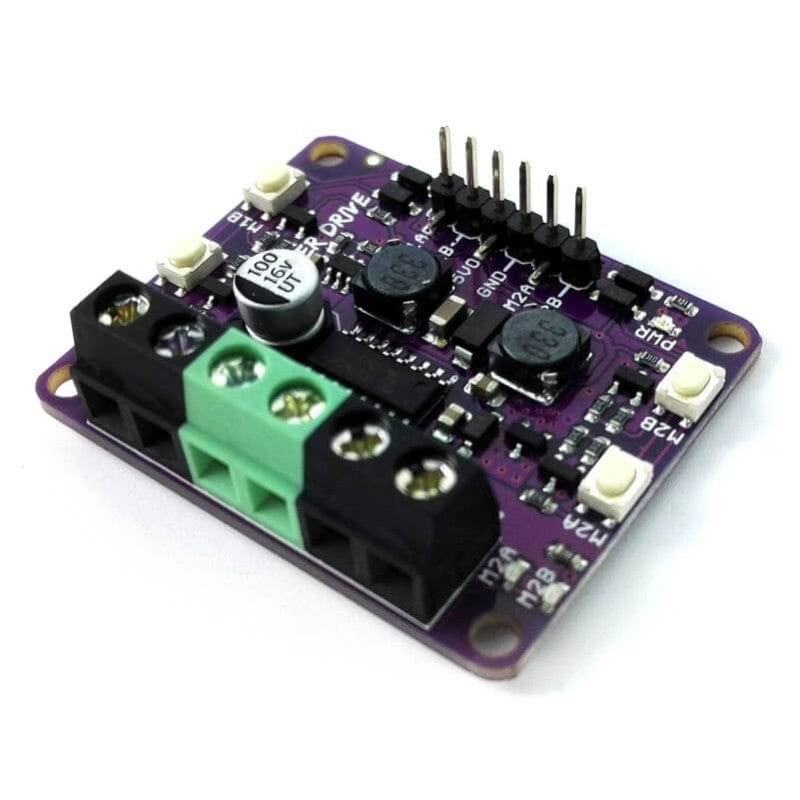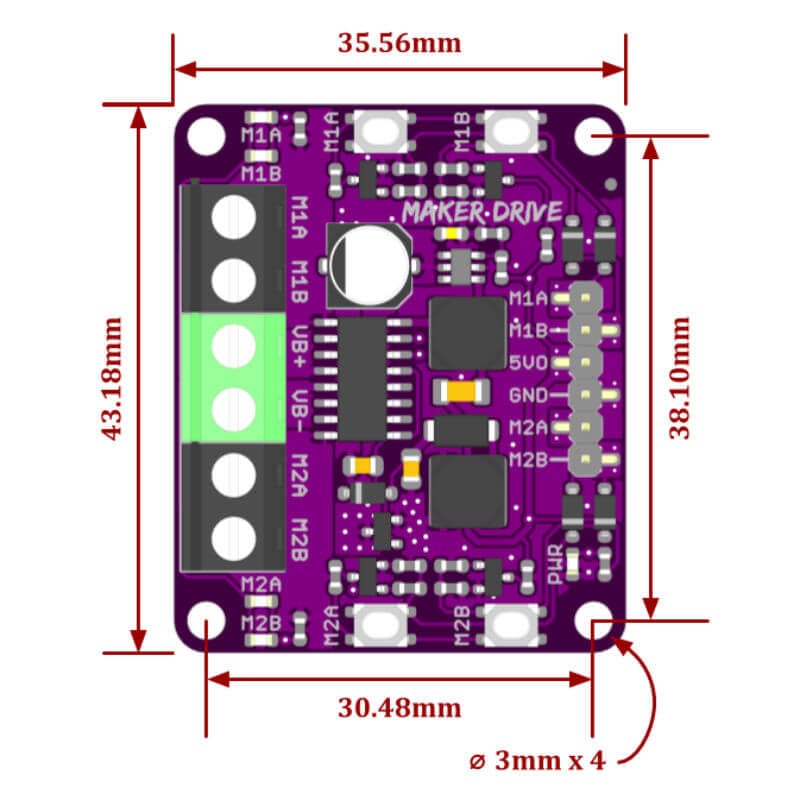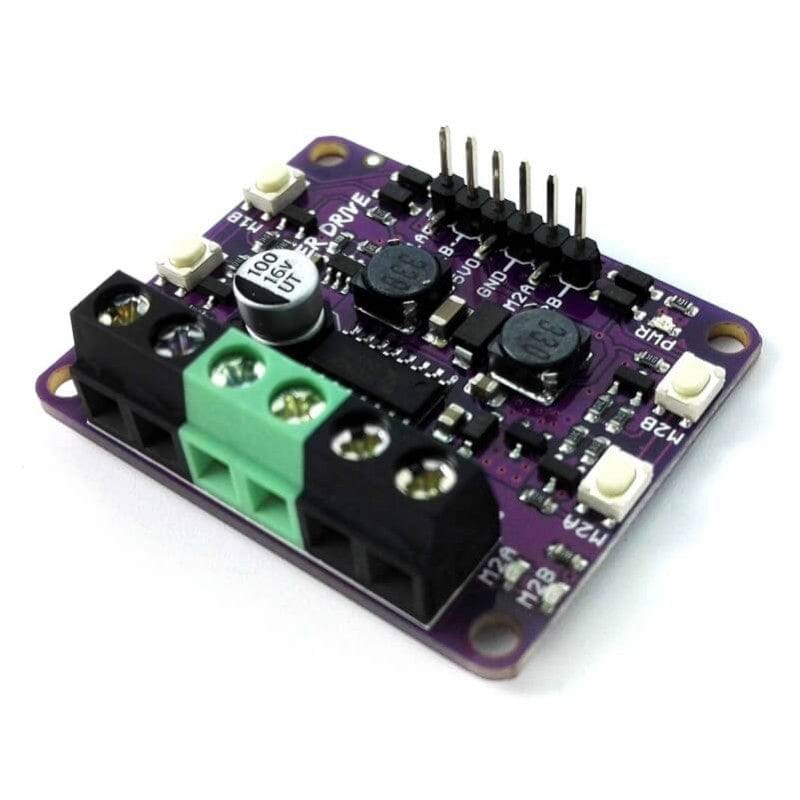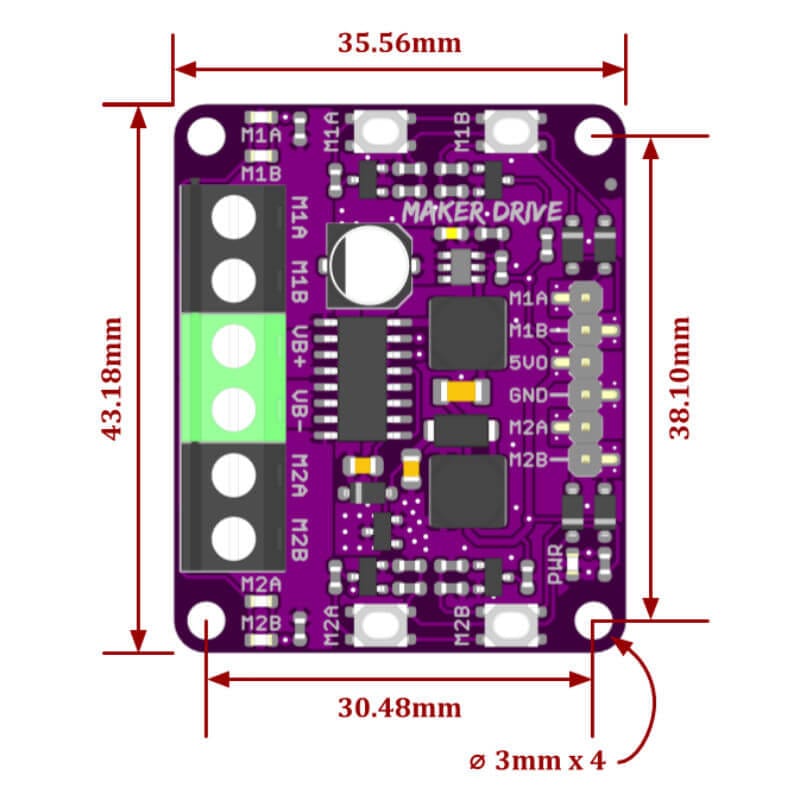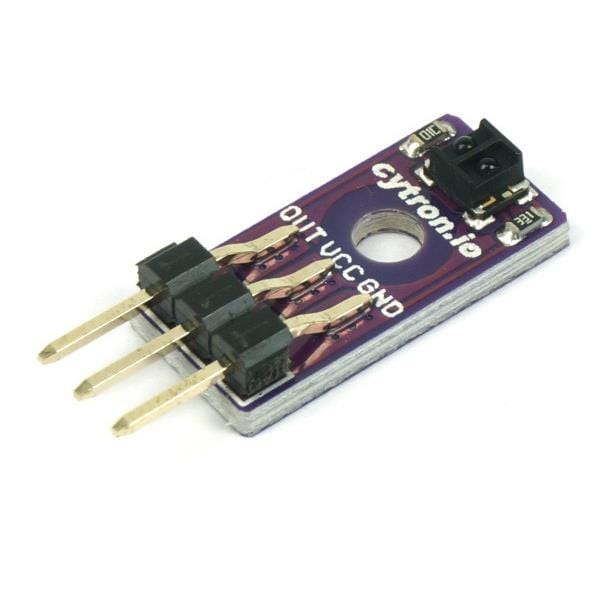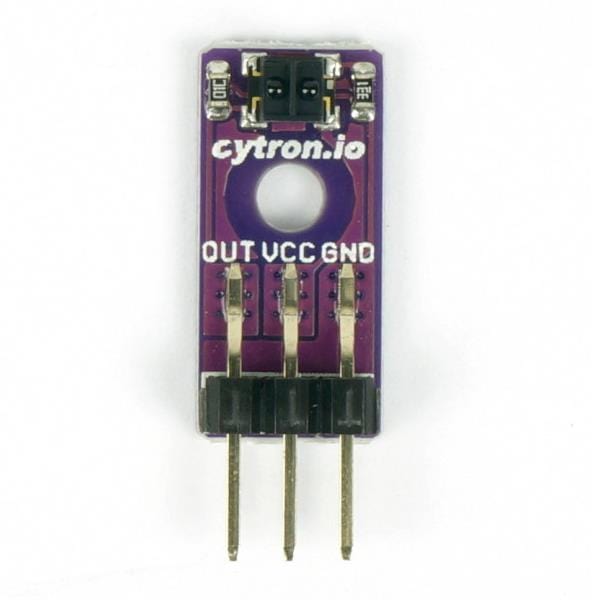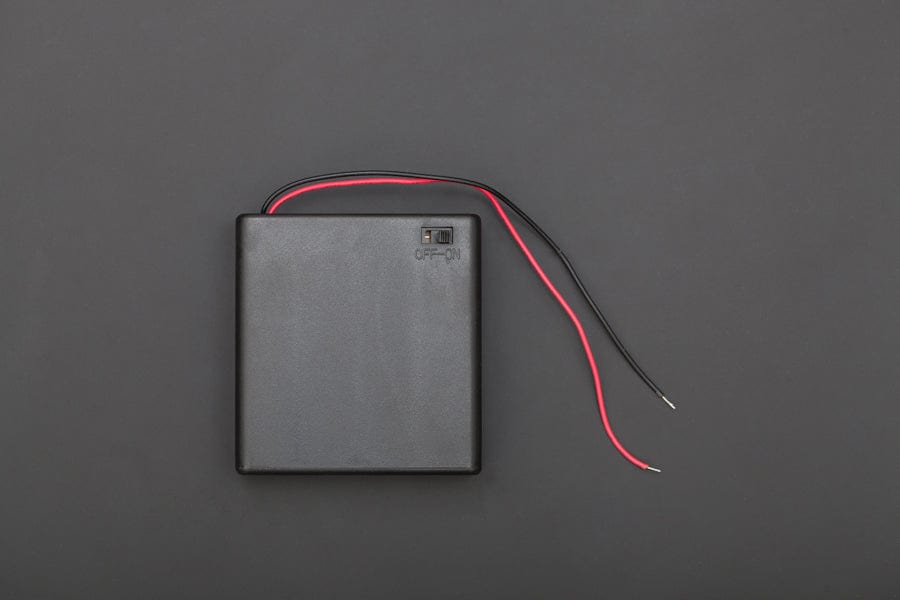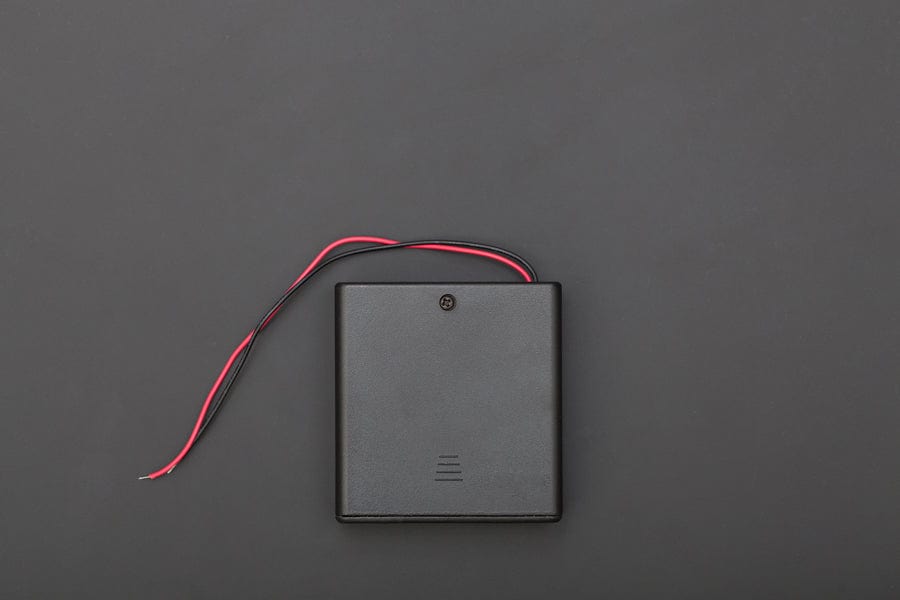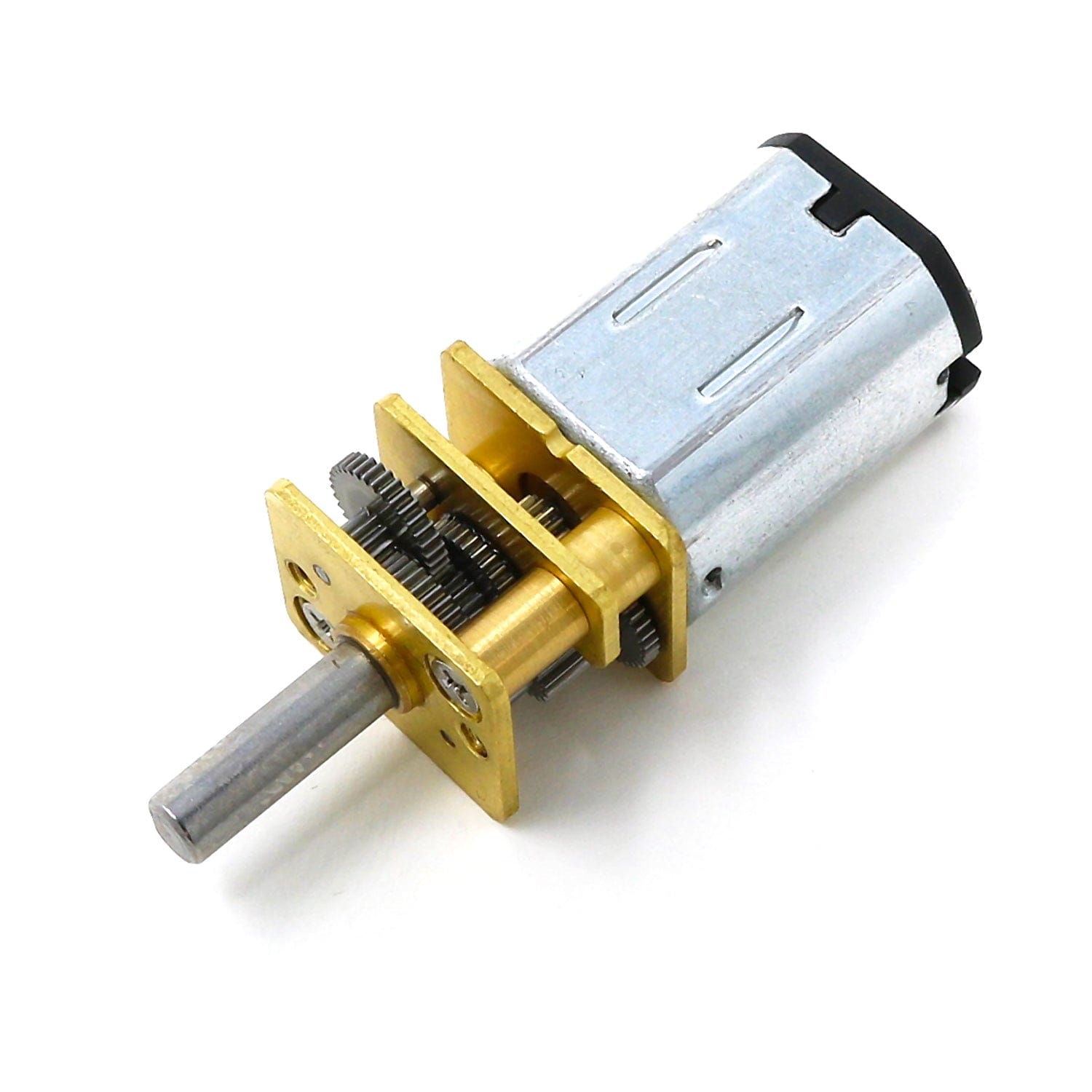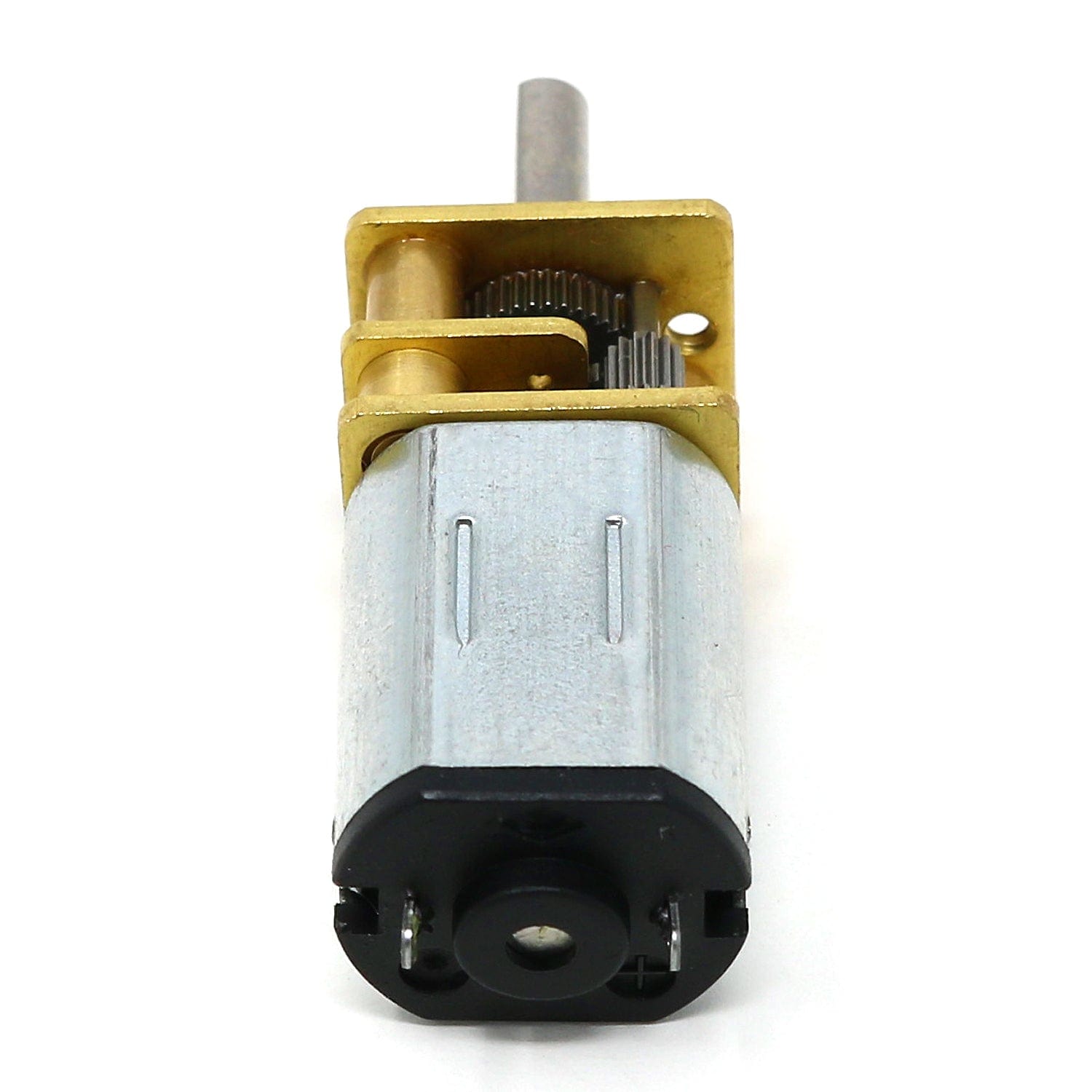Brushed motor is the most widely used motor because it is easy to use. Just supply the two terminals with DC power, the motor will start rotating! If you want to control it's speed and direction using a controller, usually you will use a L298N Motor Driver. But if you want an easy and beginner friendly motor driver, you are at the right page! Maker Drive is designed for simplicity and with beginner in mind!
The Problem Faced by Beginners in Driving DC Brushed Motor
Maker Drive is designed base on feedback from users, especially 1st time user. If you are a beginner or newbie that needs a simple motor driver to drive DC brushed motor for building mobile robot or other purposes, you might face some of these obstacles:
-
Burning your Motor Driver - Many low cost motor driver does not come with Reserve Polarity Protection and this might result in smoke coming out from the driver if you connect the power in wrong polarity. This give you a burnt motor driver and of course the waste of money and your precious time. This will further cause anxiety for you to kickstart your electronics project.
-
Too Bulky for compact project - Some motor driver comes with BIG heat sink and take up too much space.
-
Hard to test and troubleshoot - With normal motor driver, beginners face a common problem during building project - difficulty in testing and troubleshooting the circuit. Yes, even with a clear schematic or diagram, the circuit will not work right after you complete the connection. Most of the time, we will need to test or troubleshoot. Without easy to use input and output indicator, you will need to write program to test the motor driver. And that increases the complexity of debugging as we do not know whether the problem is due to wire connection or coding in your program.
-
Separate Power for Low Voltage Motor - Many low cost motor driver has onboard 5V linear voltage regulator, which is great to power your controller like Arduino. But this linear voltage regulator will not output 5V if Vin is lower than 7V. Yet, many small toy motors used in DIY projects are rated at lower than 7V. These motors are suitable to be powered by two AA or AAA batteries (3V or less) or single cell Li-ion 18650/Li-Po battery (3.7V rated voltage). With that, you will need two separate power sources, one for the motors and another one to get stable 5V output for controller such as Arduino board.
Here is Our Solution: Maker Drive
Maker Drive is designed to solve the above problems while adding some useful features:
-
Fool Proof (Peace of Mind) - Maker Drive comes with Reverse Polarity Protection at Vin/Vmotor/Vbatt (Power for motor) terminal. With this protection it will greatly reduce the risk of damaging the motor driver
-
Compact Design - Maker Drive is designed to be compact, roughly the size of a passport photo, 43mm(W) x 35mm(L) x 14mm(H)
-
4 Test Buttons (2 for each channel) - Easily test the motor or your mechanism without any controller or coding. Maker Drive comes with two manual test buttons for each channel. Pressing one of the buttons will drive the output full speed in a direction (if there is motor connected) on respective channel. While another button will drive the output in another direction. These buttons are useful to test the motor direction, connection and operation; even without controller. You will love these buttons, believe me! You can also use these buttons as manual activation button too. No programming is needed to use these buttons.
-
4 Indicator LEDs (2 for each channel) - Easily test your coding and wire connections. With these indicator LEDs, you can check output voltage direction even without connecting to your motor. And combining with the Manual Test Buttons, you can test the Maker Drive easily even without controller and motor connected. You can also easily identify where the error occur for easy troubleshooting. Of course no programming is needed too. These LEDs help in testing and troubleshooting.
-
Buck-boost regulator to produce 5V output from input voltage as low as 2.5V- Power your 5V controller with 2 AA batteries. Maker Drive can produce output of 5V with input voltage range, from 2.5V up to 9.5V. This 5V output can supply 200mA to external circuit such as controller (Arduino), saving the trouble to get another another power source for your controller. Now your project can be powered with a single power source. And with the wide input voltage range, you can power Maker Drive with two AA or AAA battery (1.5V x 2 = 3V) or single cell Li-ion or Lipo battery that has rated voltage of 3.7V. That is awesome!
-
Regenerative Braking Control - In some cases, it is called Regen braking and it provides better control over motor speed. Most application perform better in Regen braking for example line following as the controller can control the speed more accurately. Another method is coast stop which allow the motor to slow down or stop using the inertia.
-
Specially Designed for Mobile Robots - Building a small mobile robot has never been easier with Maker Drive + Maker UNO duo! If you are interested in building a line following robot, you may follow this tutorial.
-
Support Stepper Motor - This is an additional bonus feature! Maker Drive is capable of driving a stepper motor.
Maker Drive is not an Arduino Shield, but it is compatible with different models of Arduino main board such as:
- Maker UNO
- Maker UNO Plus
- CT-UNO
- Arduino UNO R3
- Arduino Mega 2560
- Arduino Nano
- Arduino Pro Mini
- And the list goes on.....
Not to forget that it accepts 1.8V, 3.3V & 5V logic(for control) and is compatible with controller such as Raspberry Pi, micro:bit, BeagleBone, ESP8266, ESP32, etc.
Since you have Maker Drive, you will need suitable DC brushed motor besides the controller, right? So which motor is suitable for Maker Drive? Well, as long as the motor is...
- DC Brush motor (Two Terminals)
- Operating voltage from 2.5V to 9.5VDC
- Rated Current <= 1.0A
- Peak Current <= 1.5A
Example of suitable DC brush motor for Maker Drive (Not limit to):
- 6V 85RPM DC Micro Metal Gearmotor
- 6V 225RPM 0.35kgfcm
- 12V 125RPM 0.5kgfcm Brushed DC Geared Motor
- TT Motor + Wheel Kit
- Tamiya Double Gearbox (Although the stall current is 2.10A)
- Tamiya Twin-Motor Gearbox (Although the stall current is 2.10A)
- TT Motor - Dual Metal Shaft3V miniature toy motor
- The TT motors in Aluminum 2WD TT Robot/Motor Chasis
- The TT motors in Maker UNO Bluetooth Robot Kit
These are the suggested power sources for Maker Drive:
- 2 x AA/AAA batteries (2 x 1.5V = 3.0V) + Battery holder
- 3 x AA/AAA batteries (3 x 1.5V = 4.5V) + Battery holder
- 4 x AA/AAA batteries (4 x 1.5V = 6.0V) + Battery holder
- 1 x Li-ion 18650 battery (1 x 3.7V, 3.0V to 4.2V) + Battery Holder
- 2 x Li-ion 18650 batteries (2 x 3.7V = 7.4V, 6.0V to 8.4V) + Battery Holder
- 1 x Li-ion 14500 battery (1 x 3.7V, 3.0V to 4.2V) + Battery Holder (coming soon)
- 2 x Li-ion 14500 batteries (2 x 3.7V = 7.4V, 6.0V to 8.4V) + Battery Holder
Features:
- Dual channel, Bi-directional control motor driver
- Support motor voltage from 2.5V to 9.5VDC
- Maximum current up to 1.0A continuous and 1.5A peak (<5 seconds)
-
5V Output (200mA) to power the controller.
-
Inputs compatible with 1.8V, 3.3V and 5V logic (Arduino, Raspberry Pi, etc).
- Solid-state components provide faster response time and eliminate the wear and tear of mechanical relay
- Regenerative Braking
- Speed control PWM frequency up to 20KHz (Actual output frequency is the same as input frequency)
- Dimension: 43mm(W) x 35mm (L) x 14mm (H)
Documents/Example Code:
Packing List:
